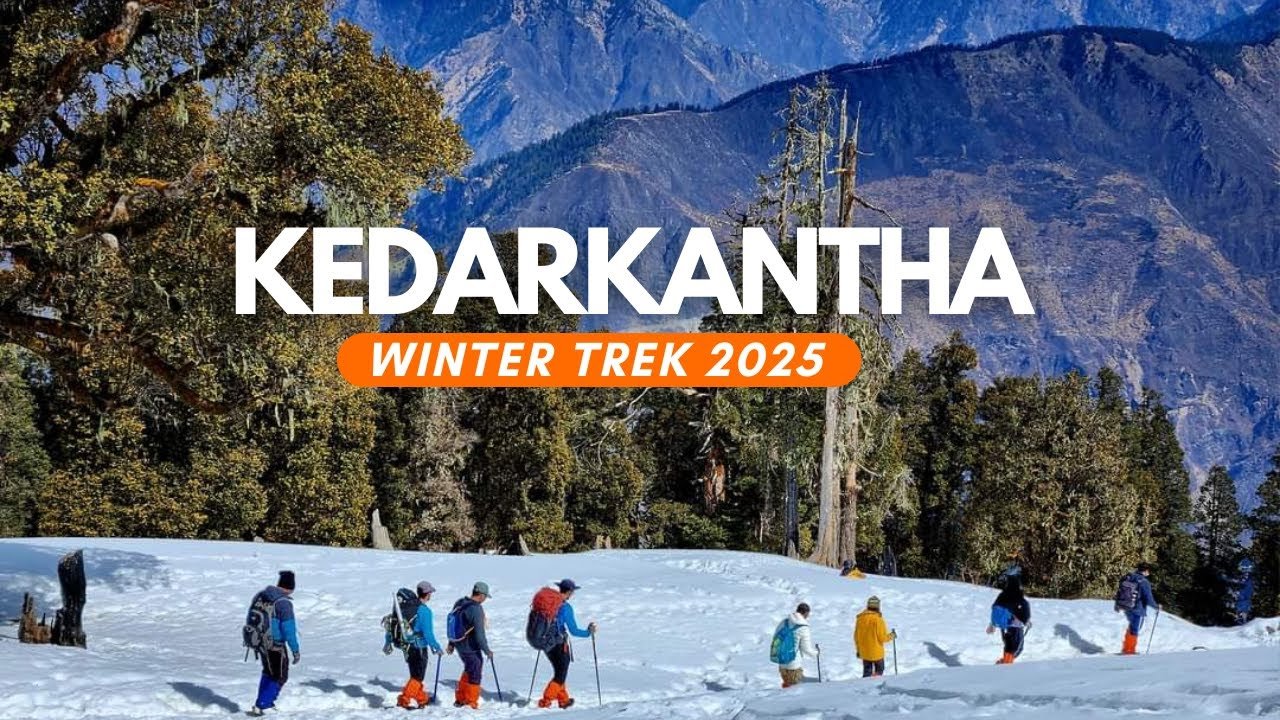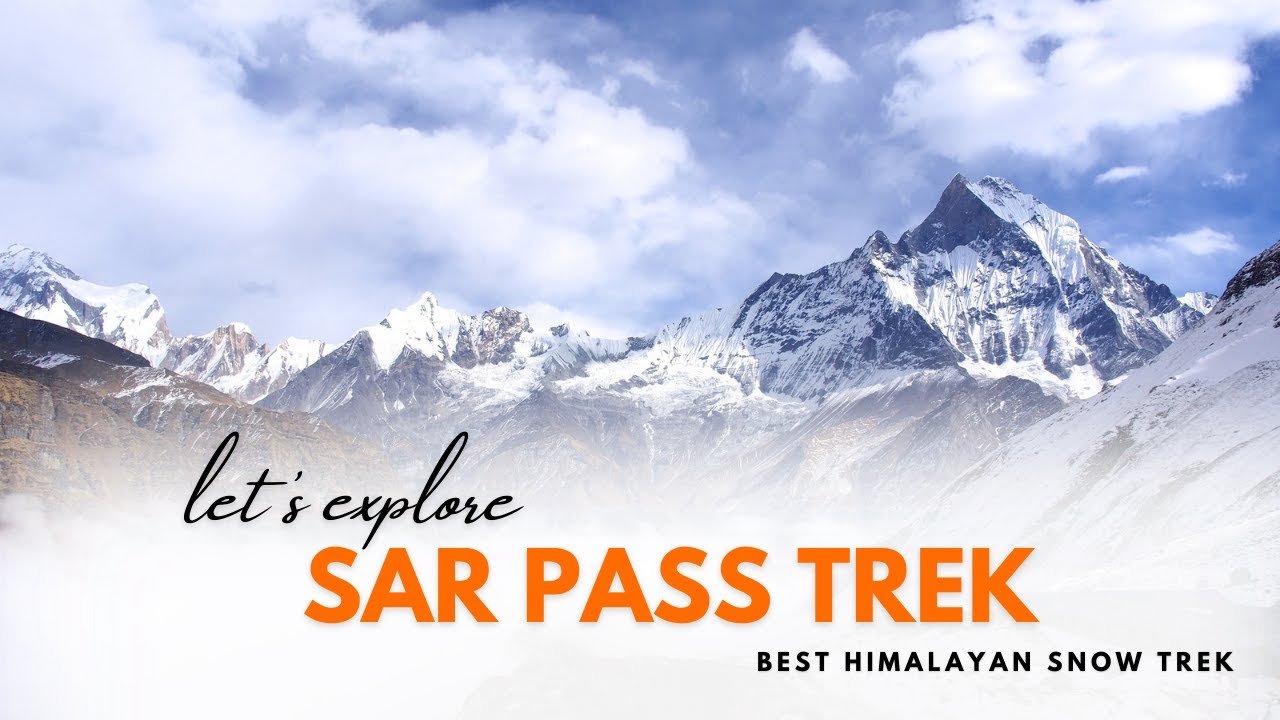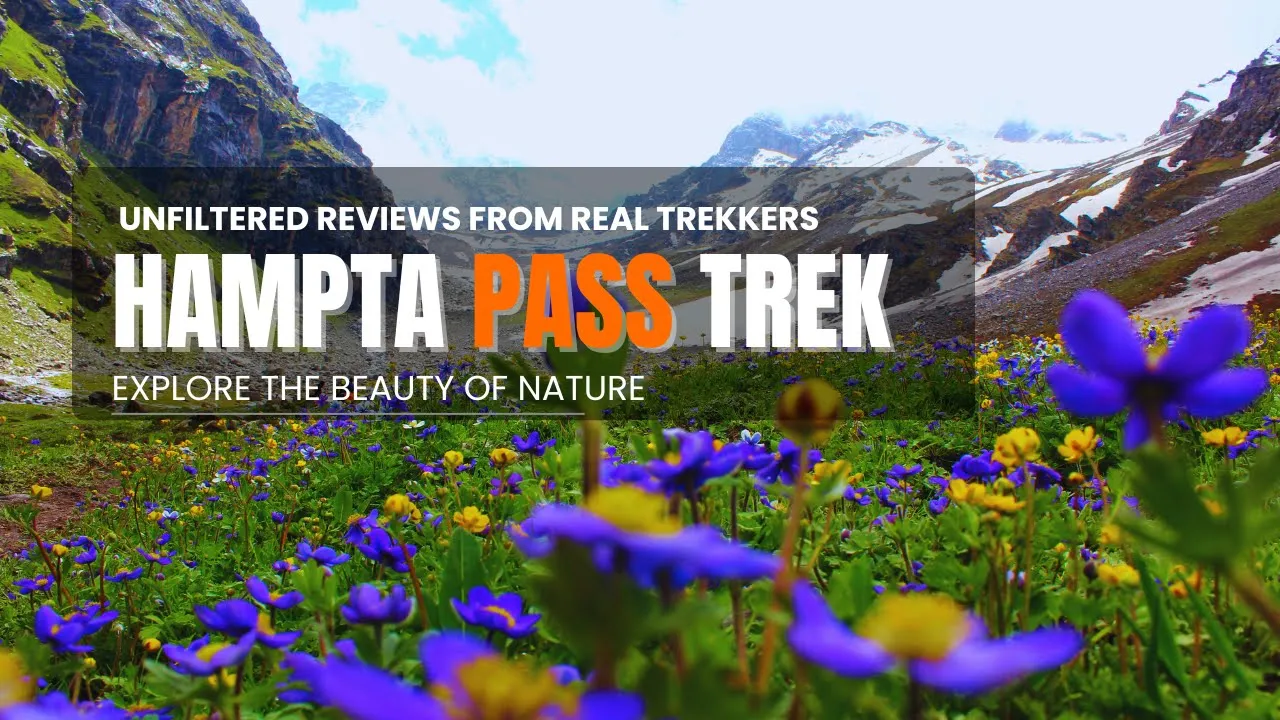Kedarnath Temple: This is the most famous temple among the Panch Kedar. It is located at an altitude of 3,583 meters (11,755 feet) above sea level, in the Rudraprayag district of Uttarakhand. The temple is dedicated to Lord Kedarnath, who is believed to be one of the forms of Lord Shiva. The trek to Kedarnath Temple starts from Gaurikund, which is about 16 kilometers away.
Panch Kedar Trek Guide
Day 01: Drive from Haridwar/Rishikesh to Guptkashi/Gaurikund (Drive) 240 km (8/9 hours). Overnight stay at Hotel.
Day 02: Trek from Gaurikund to Kedarnath Temple (Trek) 16 km (8/9 hours). Overnight stay at Camp or Hotel.
Day 03: Trek from Kedarnath to Guptkashi (Trek). Overnight stay at Hotel.
Day 04: Drive from Guptkashi to Ransi and then trek to Gaundhar. Here’s an overview of the route and the approximate distances:
Day 05: Trek from Gaundhar to Madhyamaheshwar Temple. Here’s what you can expect:
Day 06: Trek from Madhyamaheshwar Temple back to Ransi, then drive to Chopta. Here’s what your day might look like:
Day 07: Trek from Chopta to Tungnath and Chandrashila Peak (Trek) back to Camp. Overnight stay at Camp.
Day 08: Drive from Chopta to Sagar Village (Drive) – Same day trek to Pannar Bugyal.
Day 09: Trek from Pannar Bugyal to Rudranath and back to Pannar Bugyal. This would involve considerable distance and time as Rudranath is one of the Panch Kedar temples located at a higher altitude. Here’s a suggested itinerary for this trek:
Day 10: Trek from Pannar Bugyal to Sagar Village. Same day drive to Joshimath/Garudganga.
Day 11: Drive from Garudganga to Kalpeshwar temple after darshan and pooja. Return to Hotel.
Day 12: Garudganga to Rishikesh or Haridwar. Travel time may vary depending on the specific location of Garudganga and the chosen route. However, I can provide a general overview of the route and approximate distance.
Day 1: Drive from Haridwar/Rishikesh to Guptkashi/Gaurikund (Drive)
Note: AC vehicles are only available for customized trek packages.Start early and drive from Haridwar/Rishikesh to Gaurikund, the base camp for the Kedarnath trek. The journey takes around 8-9 hours, covering approximately 220-240 kilometers. Check into a guesthouse or hotel in Gaurikund and rest for the night.

Day 2: Trek from Gaurikund to Kedarnath Temple (Trek)
Begin the trek from Gaurikund to Kedarnath Temple, which is approximately 16 kilometers. The trek usually takes around 6-8 hours, depending on your pace and the weather conditions. Reach Kedarnath Temple, offer prayers, and explore the surroundings. Overnight stay in a guesthouse or dharamshala near the temple.

Day 3: Trek from Kedarnath to Guptkashi (Trek)
Descend from Kedarnath to Gaurikund. Same day to Guptkashi by taxi Drive from Gaurikund to Guptkashi overnight stay Hotel Top of Form

Day 4:of your Panch Kedar Yatra itinerary, you’ll be driving from Guptakashi to Ransi and then trekking to Gaundhar. Here’s an overview of the route and the approximate distances:
Guptakashi to Ransi (Drive)
- Guptakashi to Ransi is a relatively short drive, approximately 20-25 kilometers.
- The drive usually takes around 1-1.5 hours, depending on road conditions and traffic.
Ransi to Gaundhar (Trek)
- The trek from Ransi to Gaundhar is a moderate trek through picturesque landscapes, covering around 9-10 kilometers.
- The trek usually takes around 4-6 hours, depending on your pace, trail conditions, and rest stops.
- The route passes through dense forests, meadows, and small streams, offering beautiful views of the surrounding Himalayan peaks.

Day 5: of your Panch Kedar Yatra itinerary, you’ll be trekking from Gaundhar to Madhyamaheshwar Temple. Here’s what you can expect:)
Gaundhar to Madhyamaheshwar Temple (Trek):
The trek from Gaundhar to Madhyamaheshwar Temple is a significant part of the Panch Kedar Yatra. The distance covered during the trek is approximately 10 kilometers.
The trek usually takes around 6-8 hours, depending on your pace, trail conditions, and rest stops.The route involves ascending terrain as you make your way towards Madhyamaheshwar Temple, situated at an altitude of 3,497 meters (11,473 feet)./p>
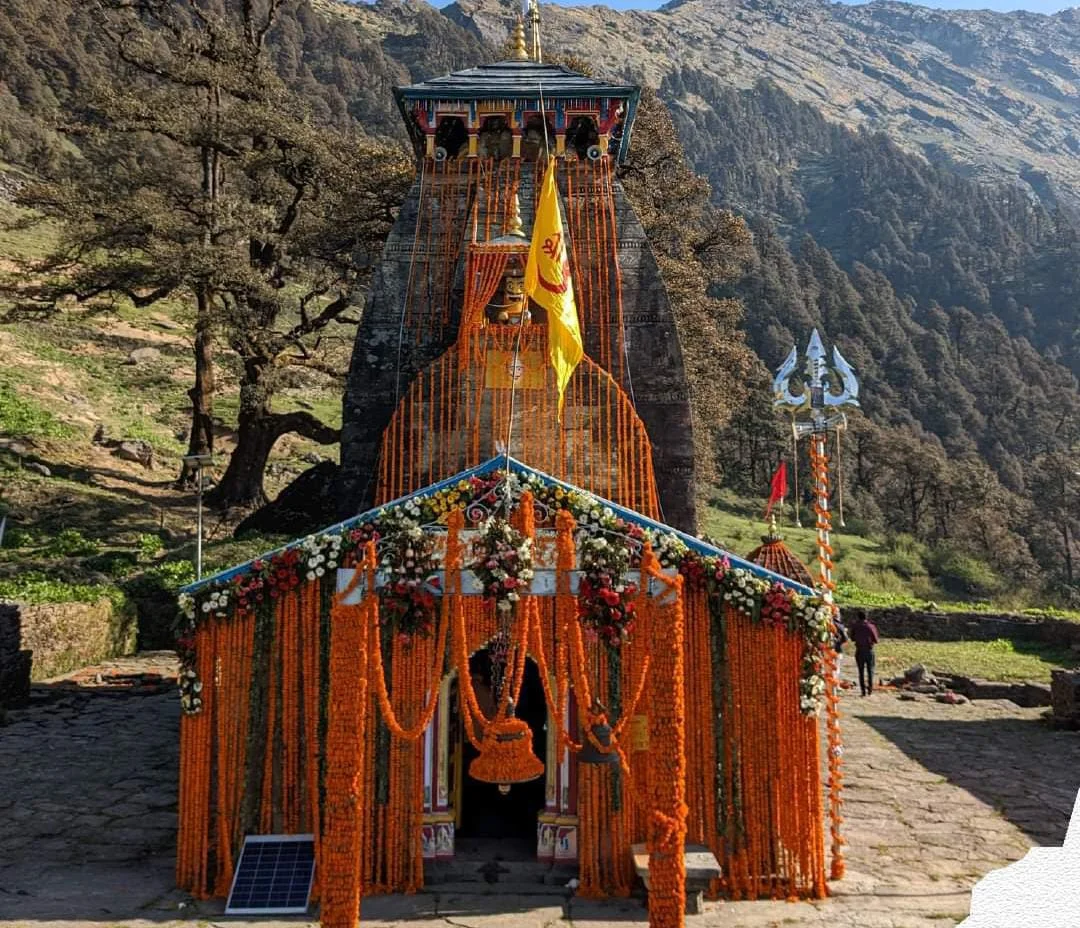
Day 6: 6 of your Panch Kedar Yatra itinerary, you’ll be trekking from Madhyamaheshwar Temple back to Ransi, and then driving to Chopta. Here’s what your day might look like:
Madhyamaheshwar to Ransi (Trek):
Begin your day with an early start from Madhyamaheshwar Temple. The trek back to Ransi covers the same distance as your earlier trek, approximately 17-18 kilometers. The descent from Madhyamaheshwar Temple to Ransi may take slightly less time compared to the ascent. Enjoy the scenic views and serene surroundings as you make your way back to Ransi.
Ransi to Chopta (Drive):
Once you reach Ransi, prepare for the drive to Chopta, the base for the Tungnath Temple trek. The distance between Ransi and Chopta is around 30-35 kilometers. The drive usually takes approximately 1.5-2 hours, depending on road conditions and traffic. Upon reaching Chopta, check into your accommodation and relax after the day’s trek.
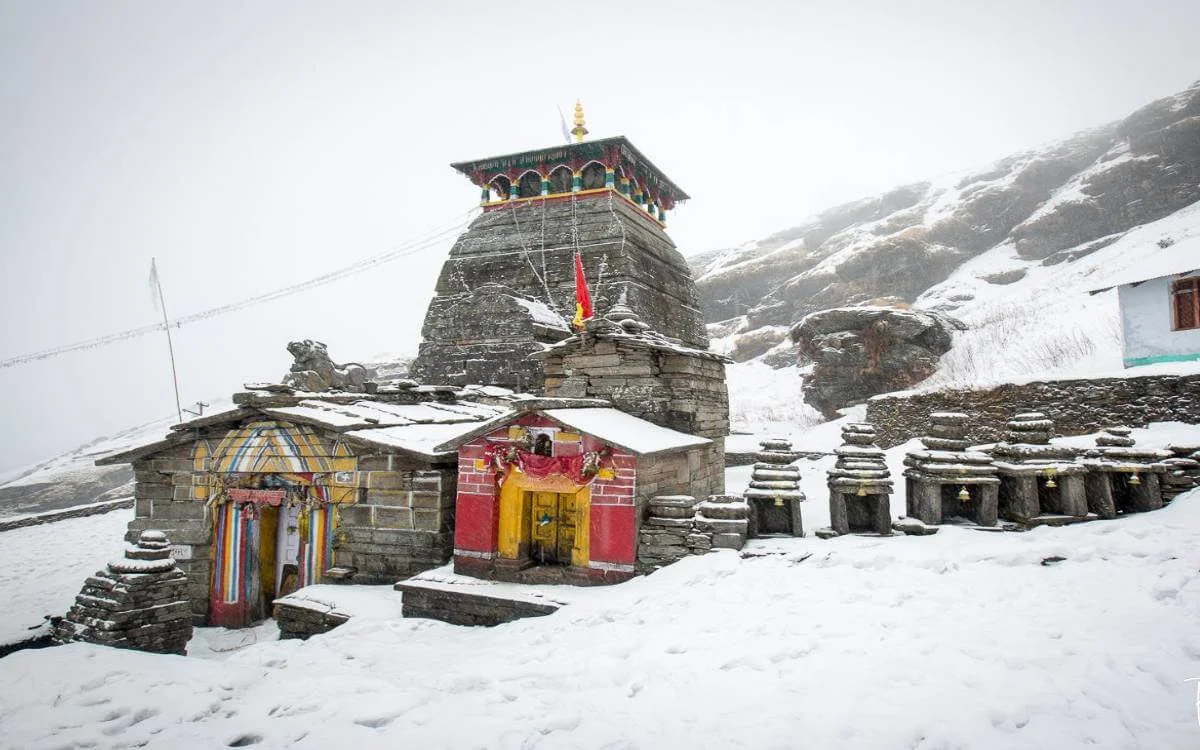
Day 7: Chopta to Tungnath and Chandrashila Peak (Trek)
Trek from Chopta to Tungnath Temple (3.5 kilometers). Continue trekking to Chandrashila Peak (1.5 kilometers). Enjoy stunning panoramic views from the peak. Return to Chopta for an overnight stay.Swiss Camp

Day 8: Drive from Chopta to Sagar Village (Drive) – Same day trek to Pannar Bugyal
Chopta to Sagar Village (Drive):
Start your day with an early breakfast and prepare for the drive from Chopta to Sagar Village. The distance between Chopta and Sagar Village is approximately 30-35 kilometers. The drive typically takes around 1.5-2 hours, depending on road conditions and traffic. Enjoy the scenic views along the route as you descend from the Chopta region to Sagar Village.
Sagar Village to Pannar Bugyal (Trek):
Upon reaching Sagar Village, prepare for the trek to Pannar Bugyal. Pannar Bugyal is a beautiful meadow located at an altitude, offering breathtaking views of the surrounding Himalayan peaks. The trek from Sagar Village to Pannar Bugyal is approximately 5-6 kilometers.

Day 9: Trekking from Pannar Bugyal to Rudranath and back to Pannar Bugyal would involve a considerable distance and time, as Rudranath is one of the Panch Kedar temples located at a higher altitude. Here’s a suggested itinerary for this trek:
Day 1: Pannar Bugyal to Rudranath Temple
Start early in the morning from Pannar Bugyal. Trek from Pannar Bugyal to Rudranath Temple. The trek distance is approximately 18-20 kilometers, depending on the specific route taken. The trek usually takes around 7-9 hours, considering the ascent to Rudranath Temple. Enjoy the scenic views along the trail, including forests, meadows, and mountain vistas. Reach Rudranath Temple by late afternoon or evening. Explore Rudranath Temple and its surroundings.
Same Day Return: Rudranath to Pannar Bugyal
After breakfast, begin your descent from Rudranath Temple back to Pannar Bugyal. Retrace your steps along the same trail used for the ascent. Enjoy the downhill trek, which may take around 6-8 hours, depending on your pace. Rest and relax at Pannar Bugyal, enjoying the tranquility of the meadow.
Trekking from Pannar Bugyal to Sagar Village followed by a drive to Urgam Village:
Trekking from Pannar Bugyal to Sagar Village followed by a drive to Urgam Village offers an adventure through the scenic landscapes of Uttarakhand. Here’s a suggested itinerary:
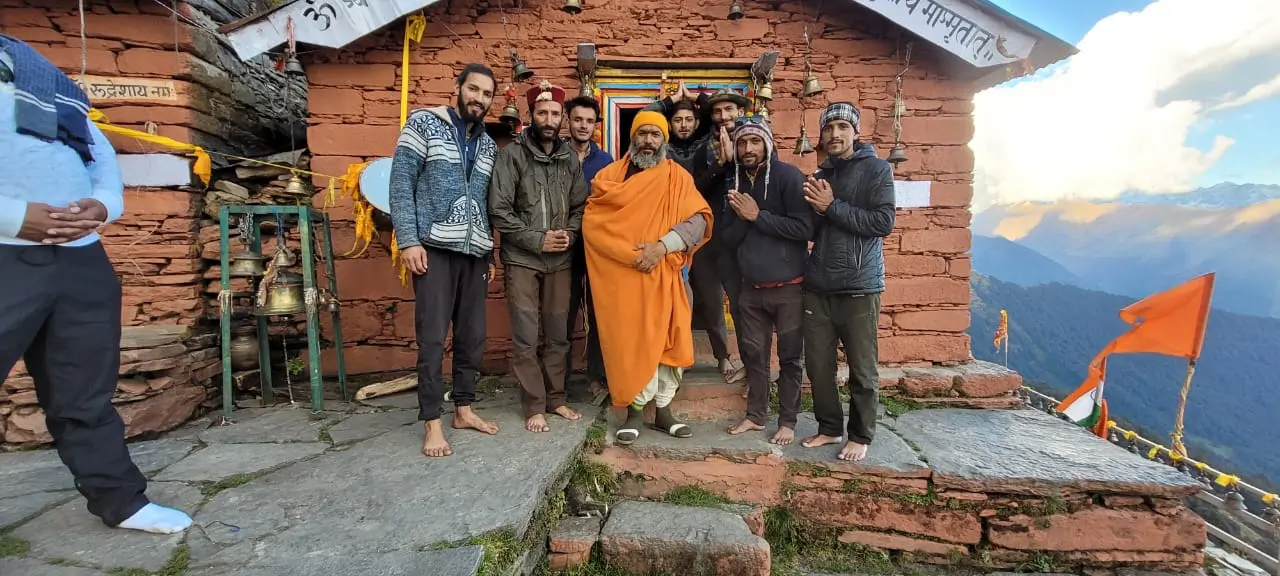
Day 10: Trek from Pannar Bugyal to Sagar Village
Begin your day early in the morning at Pannar Bugyal:
Start the trek from Pannar Bugyal to Sagar Village. The trek distance is approximately 5-6 kilometers. The trek usually takes around 2-3 hours, depending on your pace and trail conditions. Enjoy the picturesque views of the surrounding mountains, meadows, and forests as you descend towards Sagar Village. Upon reaching Sagar Village, take some time to rest and refresh yourself. Meet your transport arrangements for the onward journey to Urgam Village.
Same Day Continued): Drive from Sagar Village to Joshimath/ Garudgaga:
Once you’ve regrouped at Sagar Village, embark on the drive to Urgam Village. The distance between Sagar Village and Urgam Village is approximately 10-12 kilometers. The drive usually takes around 1-1.5 hours, depending on road conditions. Enjoy the scenic views during the drive as you traverse through the mountainous terrain. Arrive at Urgam Village by late afternoon or early evening. Check into your accommodation at Urgam Village and relax after the day’s journey.
The drive from Garudganga to Kalpeshwar and back to Garudganga can be an adventure through the scenic routes of Uttarakhand. Here’s a suggested itinerary:

Day 11: Drive from Garudganga to Kalpeshwar
Begin your day early in the morning at Garudganga:
Start the drive from Garudganga to Kalpeshwar. The distance between Garudganga and Kalpeshwar is approximately 50-60 kilometers. The drive usually takes around 2-3 hours, depending on road conditions and traffic. Enjoy the picturesque views of the Himalayas and the lush greenery along the way. Arrive at Kalpeshwar by late morning or early afternoon. Visit Kalpeshwar Temple and explore the surroundings. Spend some time soaking in the spiritual ambiance and tranquility of the place. After exploring Kalpeshwar, you can have lunch at nearby eateries or carry packed meals.
After Darshan Return to Garudganga Hotel:
Enjoy the scenic drive back from Kalpeshwar to Garudganga, retracing the route you took earlier. Take breaks as needed and capture the breathtaking views of the landscape. Arrive back at Garudganga by late afternoon or early evening. Check into your hotel or accommodation at Garudganga and unwind after the day’s journey.

Day 12: Garudganga to Rishikesh or Haridwar can vary depending on the specific location of Garudganga and the chosen route. However, I can provide a general overview of the route and approximate distance:
Garudganga to Rishikesh:
If Garudganga is located near Joshimath or in the vicinity of the Garhwal region, you would typically take the road via Chamoli and Rudraprayag to reach Rishikesh.
The distance from Garudganga to Rishikesh is approximately 200–250 kilometers, depending on the exact starting point and the specific route taken.
The drive usually takes around 7–9 hours, depending on road conditions, traffic, and any stops along the way.
The route offers scenic views of the Himalayas, rivers, and valleys as you descend from the mountains towards the plains of Rishikesh.
Garudganga to Haridwar:
Similar to the route to Rishikesh, if Garudganga is located near Joshimath or in the Garhwal region, you would typically take the road via Chamoli and Rudraprayag to reach Haridwar.
The distance from Garudganga to Haridwar is also approximately 200–250 kilometers, depending on the exact starting point and the specific route taken.
The drive usually takes around 7–9 hours, similar to the route to Rishikesh.
Along the way, you’ll pass through picturesque landscapes, with the Ganges River accompanying you for a significant portion of the journey.

Moderate Terrain:
The trekking trails to the Panch Kedar temples often involve moderate to challenging terrain, including steep ascents, descents, rocky paths, and uneven surfaces.
Some sections of the trails may require navigating through dense forests, crossing streams, or traversing narrow ridges.
Trekking at high altitudes can also pose challenges due to reduced oxygen levels, which may cause altitude-related issues such as altitude sickness.
Altitude Gain:
The Panch Kedar temples are located at varying altitudes ranging from approximately 1,500 meters (4,900 feet) to over 3,500 meters (11,500 feet) above sea level.
Trekking to higher altitudes involves gradual altitude gain, which can be physically demanding, especially for those not acclimatized to high altitudes.
Duration and Distance:
The duration and distance of each trek to the Panch Kedar temples vary, but most treks involve covering distances ranging from 5 kilometers to 18 kilometers (one way).
Trekking durations can range from 2-3 hours for shorter treks to 7-9 hours or more for longer treks, depending on the specific route and individual pace.
Weather Conditions:
Weather conditions in the Himalayan region can be unpredictable, with temperatures varying from hot and sunny to cold and windy, even during the summer months.
Rainfall, snowfall, and sudden changes in weather can impact trail conditions and visibility, adding to the difficulty level of the trek.
Fitness Requirements:
While prior trekking experience is not always necessary, participants should have a basic level of physical fitness and endurance to undertake the Panch Kedar Yatra trek.
Regular cardiovascular exercise, strength training, and endurance-building activities can help prepare for the trek.
Summer (May to June):
May to June is considered one of the most popular times for the Panch Kedar Yatra.
During this period, the weather in the Himalayan region is generally mild and pleasant, with clear skies and comfortable temperatures during the day.
The snow has usually melted by this time, making the trekking trails more accessible and safer for pilgrims.
The lush greenery and blooming flowers add to the scenic beauty of the Himalayan landscape, enhancing the overall experience of the yatra.
Early autumn (September to October):
Another excellent time to visit the Panch Kedar temples is during the early autumn months of September to October.
During this time, the monsoon season has ended, and the weather begins to clear up, offering crisp and clear days for trekking.
The temperatures are moderate, making it comfortable for trekking during the day, while the nights may be cooler at higher altitudes.
The autumn months also offer stunning views of the surrounding Himalayan peaks, as the skies tend to be clearer after the monsoon season.
Reaching Haridwar or Rishikesh, the starting points for the Panch Kedar trek, is relatively straightforward as both cities are well-connected by various modes of transportation. Here’s how you can reach Haridwar or Rishikesh:
By Train:
Haridwar and Rishikesh both have railway stations, and they are well-connected to major cities like Delhi, Mumbai, Kolkata, Chennai, and others.
You can check the train schedules and book tickets through the official Indian Railways website or other online booking platforms.
Once you arrive at the railway station in Haridwar or Rishikesh, you can proceed with your onward journey by road.
By Bus:
Haridwar and Rishikesh are easily accessible by road from various parts of North India.
State-run buses as well as private buses operate regular services to Haridwar and Rishikesh from major cities like Delhi, Dehradun, Chandigarh, Jaipur, and others.
You can book bus tickets through state transport websites, travel agencies, or at the respective bus stations.
By Air:
The nearest airport to Haridwar and Rishikesh is the Jolly Grant Airport in Dehradun, which is approximately 35-45 kilometers away.
You can fly to Dehradun from major cities like Delhi, Mumbai, Bengaluru, and others.
From the airport, you can hire a taxi or take a pre-booked cab to reach Haridwar or Rishikesh.
By Car/Taxi:
You can also reach Haridwar or Rishikesh by driving your own car or hiring a taxi.
Both cities are well-connected by roads, and you can follow national highways to reach your destination.
The journey duration will depend on your starting point, but major cities like Delhi are approximately 200-250 kilometers away and can take around 5-7 hours by road.
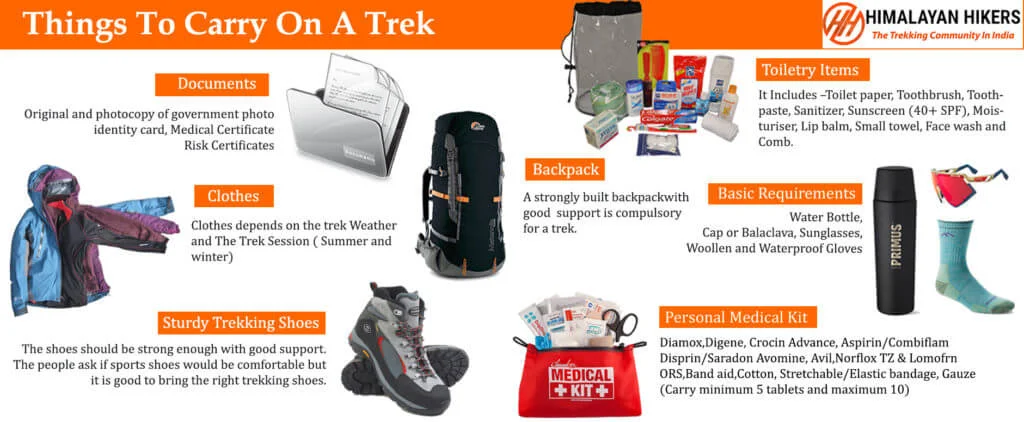
Mandatory Documents
Original and photocopy of government photo identity card- (Aadhar Card, Driving License, Voters ID, etc,)
Passport and Visa important to foreigners
Medical Certificate (First part should be filled by the Doctor and Second part by the Trekker)
Declaration Certificates
Note: – Many trekkers commit the same mistake of carrying unnecessary items on a trek which only makes the backpack heavy. It is important to know the right items to carry. It differs from season to season if you are trekking in summers then carry less layers of warm clothing and if you are trekking in winters carry enough layers to protect yourself against chilly cold.
Necessary Items for trekkers
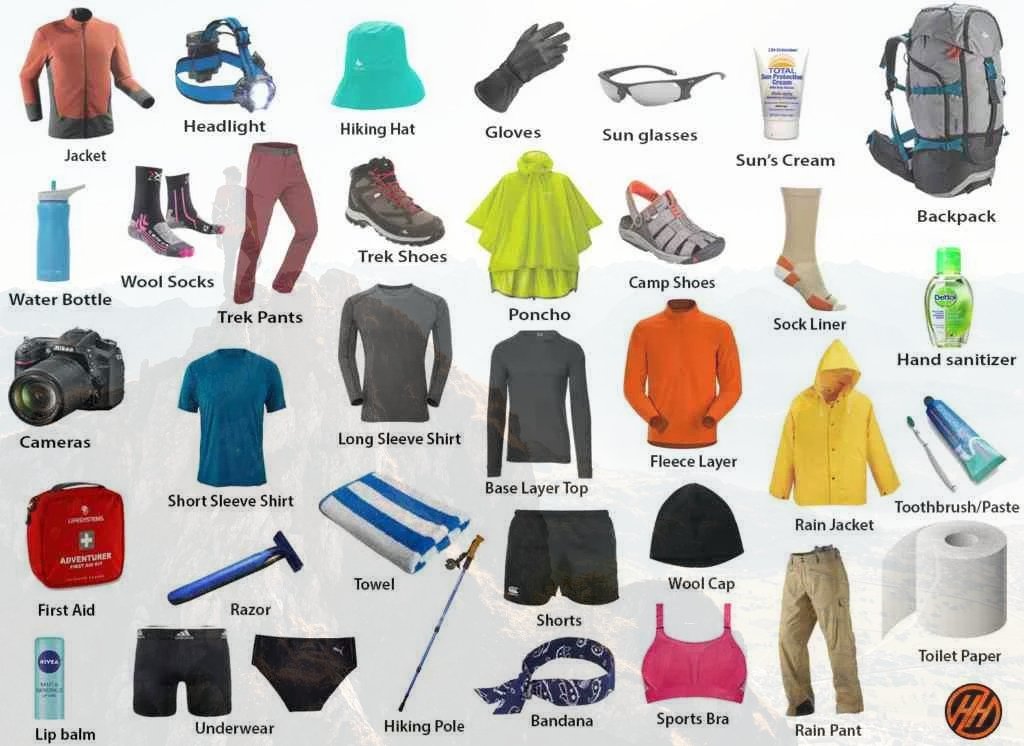
Basic Trekking Gears

The Clothes You Should Bring On On Panch Kedar Yatra Trek
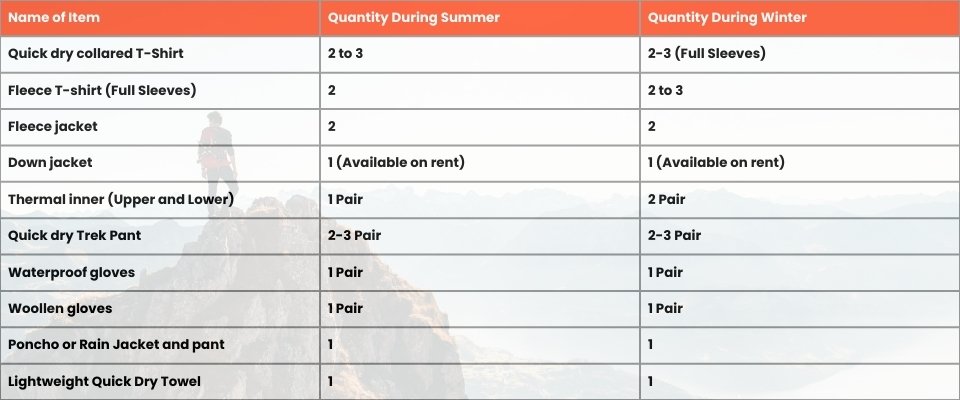
Head Gears

Foot Gears

Personal Care Essentials

Carry a Personal Medical Kit

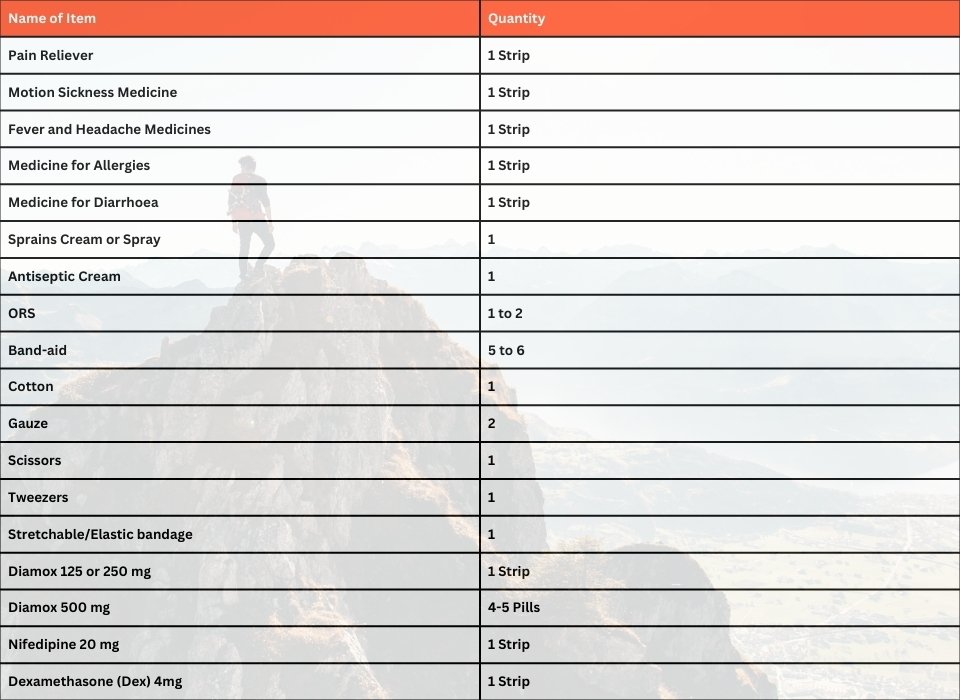
Are you Looking for Trekking Equipment on Rent?
If any trekker requires trekking equipment on rent, Himalayan Hikers offers the best-quality gear available for rental. Many individuals are in need of such equipment, and renting provides a cost-effective solution, allowing them to access high-quality gear at an affordable price without the need for a significant investment for short-term use.

Trek Equipment You can book directly on first day at the Sankri Base Camp.
Note:-
Please take all medicines only when prescribed by the doctor. In case you face any problem during your trek,
discuss and take advice from the Professional guide.
Choosing the right trekking organization for the Panch Kedar Yatra can significantly impact your overall experience and safety during the journey. Here are several reasons why Himalayan Hikers trekking organization might be a good choice for the Panch Kedar Yatra:
Experience and Expertise:
- Himalayan Hikers may have extensive experience organizing treks in the Himalayas, including the Panch Kedar Yatra.
- They may have knowledgeable guides and support staff who are familiar with the terrain, trails, and local customs, enhancing the quality of your trekking experience.
Safety Standards:
- Himalayan Hikers may prioritize safety by adhering to high safety standards and protocols during treks.
- They may provide necessary safety equipment, emergency communication devices, and first aid kits to ensure the well-being of trekkers.
Well-Planned Itinerary:
- Himalayan Hikers may offer well-planned itineraries for the Panch Kedar Yatra, including transportation arrangements, accommodation options, and trekking routes.
- They may optimize the itinerary to maximize acclimatization, minimize risks, and ensure an enjoyable experience for trekkers.
Guided Tours and Support:
- Himalayan Hikers may offer guided tours led by experienced trek leaders who can provide support, guidance, and assistance throughout the journey.
- Trek leaders may offer insights into the local culture, history, and natural surroundings, enriching your trekking experience.
Customer Reviews and Reputation:
- Positive customer reviews and a good reputation in the trekking community can indicate Himalayan Hikers’ reliability, professionalism, and commitment to customer satisfaction.
- You can research customer feedback, testimonials, and online reviews to gauge the organization’s reputation and track record.
Environmental Sustainability:
- Himalayan Hikers may practice environmental sustainability by promoting responsible trekking practices, minimizing waste generation, and respecting the natural surroundings.
- They may emphasize Leave No Trace principles and encourage trekkers to minimize their environmental impact during the journey.
Customized Services:
- Himalayan Hikers may offer customized services to meet the specific needs and preferences of trekkers, such as private tours, tailored itineraries, and group discounts.
- They may be responsive to trekkers’ inquiries, providing personalized assistance and recommendations.
Before choosing Himalayan Hikers or any trekking organization for the Panch Kedar Yatra, it’s essential to conduct thorough research, ask questions, and clarify any doubts or concerns you may have. Consider factors such as pricing, inclusions, exclusions, cancellation policies, and payment terms before making your decision. Additionally, communicate your expectations and preferences clearly to ensure a memorable and enjoyable trekking experience.




